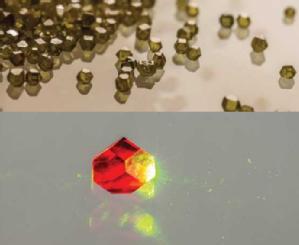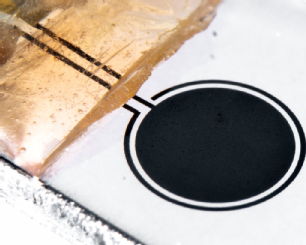Diamond Sensors
Professors Julie McPherson (Chemistry Dept) and Mark Newton (Physics Dept) are working collaboratively on various research projects in collaboration with industrial partners to develop diamond technology for sensor applications.
|
Most people know that diamond is an extremely hard material that is often used in industrial applications that involve cutting or grinding or polishing. Many people don't realise that diamond can also be used as a seminconductor material, and by carefully controlling the doping of the diamond a range of useful electrical properties can be obtained. In addition to being hard, diamond is very resistant to chemical attack and has a high thermal conductivity - in many ways it is proving to be an ideal material for making some electrical devices capable of working in very hostile environments. In this project Professors Newton and McPherson have been investigating the potential to make diamond sensors that can measure the acidity or alkalinity of liquids or that can even detect very low levels of pollutants. These new diamond sensors are now starting to be developed into commercial products for a number of applications that range from helping to ensure that our drinking water is safe through to checking that fluids involved in chemical processes like making pharamaceutical products have the right composition and properties. |
 |
 |
Boron doped diamond (BDD) is the subject of considerable interest as an electrode material as a consequence of its very wide potential window in aqueous solution, low background currents, and corrosion stability in aggressive media. In collaboration with Element Six, the Warwick research teams of Professors Mc Pherson and Newton are investigating the link between the material and electrochemical properties with a focus on applications in electroanalysis. Recent highlights include the development of high quality electroanalysis grade all diamond electrodes of any geometry for a wide range of applications (see image left showing BDD electrodes (black) insulated in insulating diamond (transparent)). |
For more information on the groups activities click here.
